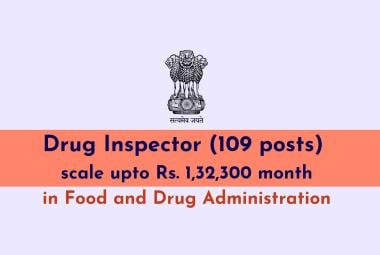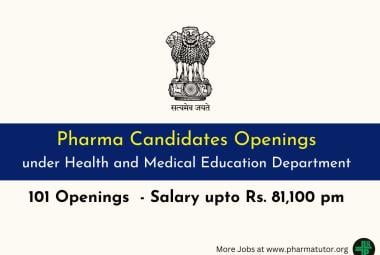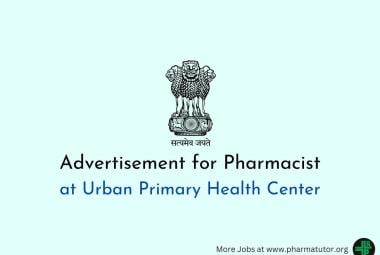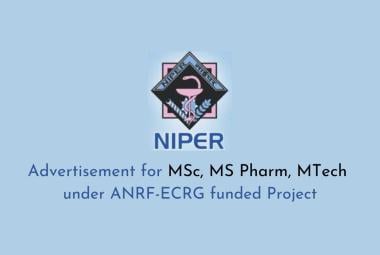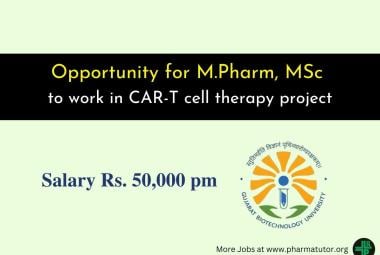{ DOWNLOAD AS PDF }
ABOUT AUTHORS:
Nandu Kayande1*, Pankaj Kushwah2
1Department of Pharmacology
2Department of Pharmacognosy
Nimar Institute of Pharmacy, Dhamnod,
Opp.ITI, Maheshwar Road Dhamnod, Dhar. M.P.
nandu_kayande@rediffmail.com
ABSTRACTS
The aim of presents study is to evaluate antidiabetic (Hypoglycemic) effect of Gymnema Sylvestre extract in alloxan induced diabetic Swiss albino mice. These aqueous extract were used for the study. The Swiss albino mice weighing 25 to 30 gm were used for the study. Mice were administered orally with the aqueous extracts of Gymnema Sylvestre with dose of 200 mg/kg, 400 mg/kg and 500 mg/kg. body weight from period of day 1 to 28 days. The study reveals that the all the three doses shows the significant decrease in blood glucose level. This study shows the significant activity of gymnema sylvestre extracts against alloxan induced diabetes. These prove the guava fruit is pancreatic protective and hypoglycemic in nature.
REFERENCE ID: PHARMATUTOR-ART-2169
INTRODUCTION(1,2,9,8)
Diabetes mellitus is a worldwide chronic disease of humans related with the elevated blood sugar level due to insulin deficiency. The patients of the disease belong to both male and female equally and to all age groups. Diabetes can genetic or acquired or by the combined effect of the two which hinders the production of insulin. India is one of the major countries in terms of Diabetic patients. The whole South East Asia and Africa have ever increasing population of diabetes.
Diabetes is broadly classified in to insulin dependent, in which the patients pancreas is not able to synthesize and secrete insulin and insulin independent in which the body cells do not possess normal receptors for insulin. They are also called as Type-1 and Type-2 Diabetes respectively. Both the types are characterized by high blood glucose level in the blood resulting in Polyuria, Polydypsia and Polyphagia. The therapeutic remedies of Diabetes cover a vast region of the healthcare market. Though there are so many hypoglycemic medicines are available in the market but the demand of natural remedies still persists. This is due to the avoidance of side effects posed by these synthetic agents and the price related issues.
In India and other countries the Herbal treatment of various diseases has a long-long history. Several plants are used for treatment of various diseases. These are natural and do not have any synthetic compounds that may harm the health of the consumer. Due to low cost the herbal medicine are widely used by different commodities. The hypoglycemic nature of bitter melon scientific name momordica charantia is well known home remedies to lower blood sugar level. The use of karela (Bitter melon) to lower blood sugar level(3) (Baby Joseph et.al) started before 1000 BC. Our guava fruit also known as Jam or Peru is well known for the antidiarroheal effect, Improves immunity power, Improves hormonal function, lowers risk of cancer, good for diabetics, also shows anti-aging properties for skin, helps treat constipation, helps improve vision, good for pregnant mothers, helps for relaxation and also good for brain.Thus, this study was undertaken to explore the efficacy of anti-diabetic activity of gymnema sylvestre extracts in diabetic rats. The possible mechanism by which this drug may act is discussed in this study.
MATERIALS AND METHODS(3,4,5,6)
Plant material and extraction
Gymnema Sylvestrewas collected from the local area of Nimar region dist. Dhar and was identified by Professor and HOD of Botany, DAVV University, Indore. The collected fruit were dried in shade and then powdered. A specimen was deposited in Botany department DAVV Indore. The powdered material was used for extraction which was kept in air tight container. The aqueous extracts were prepared by standard decoction method. The yield of extracts was approximately 9%.
Animals
Male swiss albino mice (25 to 30 gm) were used for the study. The proposal was passed by college animal ethical committee Ref. No. NIP/IACE/11/04. The animal were kept in animal room and feeded with pellet diet and water ad libitum through the 30 day period.
Experimental groups (9,10,11)
All the experimental animals were divided into 6 groups with each group consisting of 6 animals as follows:
Group 1- Control: This group was used for studying the baseline values of the parameters studied.
Group 2- Diabetic control: This group consisted of alloxan induced diabetic rats.
Group 3- Diabetic rats treated with (200 mg/kg b.w.) aqueous extract of GSE.
Group 4- Diabetic rats treated with (400 mg/kg b.w.) aqueous extract of GSE.
Group 5-Diabetic rats treated with (500 mg/kg. b.w) aqueous extract of GSE.
Group 6-Diabetic rats treated with insulin.
Experimental induction of diabetes
To induce diabetes, the rats were fasted for 24 h and injected with freshly prepared Alloxan monohydrate (CAL Laboratories, Indore) at the dose of 150 mg/kg b.w. intravenously in physiological solution of pH 4.5. Control animals received carboxy methyl cellulose. Diabetes status was confirmed by estimating the fasting blood glucose levels and urine glucose (Benedict’s test) after 72 h of alloxan injection. Animals showing fasting blood glucose levels above 250 mg/dL were selected for this study.
Drug treatment
Single dosage of acqueous extract (dissolved in 1% carboxy methyl cellulose) was given orally for 10 days and 30 days to specific groups through oral intubations and the control animals received the vehicle with TC. Lante zinc insulin (6 units/kg. b.w. i.p) was given to the specific group daily.
The study involved measuring the blood glucose levels on 0, 7, 14,21 and 28 days, 1 h after daily administration of respective treatment for 28 days.Blood samples were collected from tail vein just prior to glucose administration and at 30, 60 and 90 m after glucose loading. Blood glucose levels were measured immediately by using glucometer (Pfizer).
Statistical analysis
Data were expressed as mean ± SEM and differences between the groups were statistically determined by analysis of variance (ANOVA) followed by Dunnet’s test. P-values <0.5 were considered as statistically significant.
RESULTS AND DISCUSSION
The present study clearly showed that GSE has significant anti-diabetic activity in diabetic animals and has an efficacy of 50% to 90% compared to insulin. GSE administration in diabetic animals did not show any increase in serum insulin levels Fasting hyperglycaemia is a hallmark of DM. It has been postulated but is still debated that the fasting hyperglycemias in non-insulin dependent DM arises from the hepatic overproduction of glucose (13).However, studies by Sanjeev et al. (14) suggest that the post-absorptive hyperglycaemia in alloxan diabetic rats is largely due to decreased peripheral glucose clearance, while increased hepatic glucose output might also be a contributing factor at a very high alloxan dose. In the present study, the alloxan induced diabetic animals showed elevated fasting blood glucose levels.
Alloxan is well known for its selective beta cell cytotoxicity. It is reported that in Alloxan induced diabetic rats the beta cell count/islet and the serum insulin levels decrease considerably (7). In the present study, the serum insulin levels also decreased drastically in untreated diabetic rats. Treatment with GSE by administration of a three different dosage of extract or for 10 and 28 days did not increase the serum insulin levels in diabetic animals.
Table 1. Effect of TC extracts on fasting blood glucose
|
Groups |
Blood Glucose mg/dl |
||||
|
0 day |
7 day |
14 day |
21 day |
28 day |
|
|
Control |
79.1± 3.1 |
79.4± 2.1 |
80.2±1.1 |
78.2±4.1 |
79.5±4.4 |
|
Diabetic control |
196.4± 2.2 |
159.4 ±4.1 |
253.1±4.6 |
275.2±3.5 |
293.0±3.9 |
|
GSE 200 mg/kg |
194.5±4.6 |
129.3±4.9 |
186.0±4.5 |
170.2±4.1 |
139.1± 4.1 |
|
GSE 400 mg/kg |
126.0±3.6 |
122.1±4.3 |
136.0±4.1 |
136.1±3.9 |
129.0±4.1 |
|
GSE 500 mg/kg |
128.0±4.2 |
120.1±4.2 |
156.1±4.1 |
122.0±4.8 |
116.0±4.5 |
|
Insulin 6 Units/kg |
126.1±4.1 |
122.0±4.6 |
123.0±4.8 |
126.2±4.1 |
121.8±4.0 |
Data were expressed as mean ± SEM
CONCLUSION
Gymnema sylvestre extracts is an effective antihyperglycemic drug that can be used in the treatment of DM. Although its activity is feeble compared to insulin, it can be used as a supportive drug in the treatment of DM. The anti-diabetic activity of GSE is not through the insulin secretion by pancreatic beta cells. It may be due to the increased entry of glucose into the peripheral tissues and organs like the liver.
Since GSE increased the activity of glycogen synthase in the liver, it may be increase the storage of glucose in hepatocytes. It also may be decreased the activity of phosphorylase in the liver; thereby it may prevent the release of glucose into the blood. These observations strongly suggest that GSE may not act like sulfonylureas, but like other oral anti-hyperglycemic drugs. This study indicates that treatment with GSE may be an alternative to some of the presently available drugs, which have some adverse effects.
REFERENCES
1.Dinesh Kumar Sekar, Gaurav Kumar, L. Karthik and K. V. Bhaskara Rao, A review on pharmacological and phytochemical properties of Aegle marmelos (L.) Corr. Serr. (Rutaceae), Asian Journal of Plant Science and Research, 2011, 1 (2): 8-17.
2.Anthony C. Dweck FLS FRSC FRSH Dweck Data, A review of Guava (Psidium guajava).
3.Baby Joseph, D Jini, Antidiabetic effects of Momordica charantia (bitter melon) and its medicinal potency, Asian Pacific Journal of Tropical Disease, 2013; 3(2): 93-102.
4.Takashi Akiyoshi, Kiyohisa Uchida, Haruto Takase, Yasuharu Nomura, and Nozomu Takeuchi, Cholesterol gallstones in alloxan-diabetic mice, Journal of Lipid Research Volume 27, 1986.
5.National tropical botanical garden, ntbg.org/plants/plant_details.php?plantid=9567.
6.Gonçalves FA, Andrade Neto M, Bezerra JN, Macrae A, Sousa OV, Fonteles-Filho AA, Vieira RH.,Antibacterial activity of GUAVA, Psidium guajava Linnaeus, leaf extracts on diarrhea-causing enteric bacteria isolated from Seabob shrimp, Xiphopenaeus kroyeri (Heller). Pubmed, 2008 Jan-Feb;50(1):11-5.
7.Mohamed Ismail1, Minhas PS, Fathima Khanum, Sahana VM and Sowmya C2, Antibacterial Activity of Leaves Extract of Guava (Psidium Guajava), International Journal of Research in Pharmaceutical and Biomedical Sciences, Vol. 3 (1) Jan – Mar 2012
8. S. Buvaneswari, C.K.Raadha, N.Krishnaveni, S.Jayashree, In-vitro Antimicrobial activity of Psidium guajava against clinically important strains, E-Journal of Life Sciences, EJLS 2011, 1(1),14-22.
9.Ankur Rohilla and Shahjad Ali, Alloxan Induced Diabetes: Mechanisms and Effects, International Journal of Research in Pharmaceutical and Biomedical Sciences, Vol. 3 (2) Apr – Jun2012.
10.Mohamed Bnouham*, Abderrahim Ziyyat, Hassane Mekhfi, Abdelhafid Tahri, Abdelkhaleq Legssyer, Medicinal plants with potential antidiabetic activity - A review of ten years of herbal medicine research (1990-2000), Int J Diabetes & Metabolism (2006) 14: 1-25 .
11.Manisha Yadav , Khalid Kafeel Khan And M.Z.Beg, Medicinal Plants Used For The Treatment Of Diabetes By The Baiga Tribe Living In Rewa District M.P., Indian J.L.Sci.2(1) : 99-102, 2012.
12.Nagaraja PURANIK, Kararashah Fakruddin KAMMAR, Sheela DEVI, Anti-diabetic activity of Tinospora cordifolia (Willd.) in streptozotocin diabetic rats; does it act like sulfonylureas?, Turk J Med Sci 2010; 40 (2): 265-270.
13.M. Ayyanar, K. Sankarasivaraman and S. Ignacimuthu, Traditional Herbal Medicines Used for the Treatment of Diabetes among Two Major Tribal Groups in South Tamil Nadu, India, Ethnobotanical Leaflets 12: 276-280. 2008.
14.Sanjeev Heroor, Arunkumar, Synergistic activity of bark extracts of pongamia, World Journal of Pharmacy and Pharmaceutical Sciences, Volume 2 issue-6, 6640-52.
|
PharmaTutor (ISSN: 2347 - 7881) Volume 2, Issue 5 Received On: 28/03/2014; Accepted On: 04/03/2014; Published On: 01/05/2014 How to cite this article: N Kayande, P Kushwah; Antidibetic Evaluation of Gymnema Sylvestre Extracts in Experimental Animals; PharmaTutor; 2014; 2(5); 120-123 |
NOW YOU CAN ALSO PUBLISH YOUR ARTICLE ONLINE.
SUBMIT YOUR ARTICLE/PROJECT AT articles@pharmatutor.org
Subscribe to Pharmatutor Alerts by Email
FIND OUT MORE ARTICLES AT OUR DATABASE




